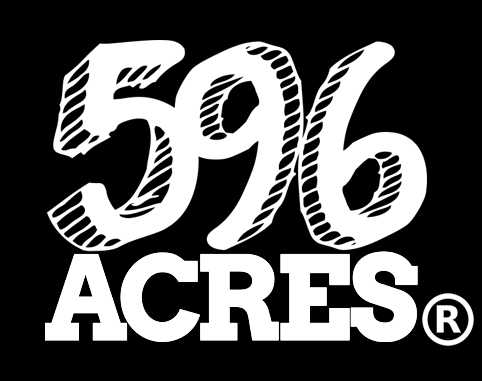Mission
596 Acres champions resident stewardship of land to build more just and equitable cities.
NYC Beginnings
The seeds of 596 Acres were planted when founder Paula Z. Segal obtained a spreadsheet of all the publicly owned vacant land in Brooklyn and created a map of it to distribute. This map was the first tool designed to let people know about the unharnessed potential hidden in plain sight throughout the city’s neighborhoods. It appeared on a poster highlighting vacant public land in Brooklyn, and as an interactive tool on our website. Getting the word out—in print and online—has been at the heart of the project ever since.
The need for advocacy for public access to public land in New York City became apparent as requests for help poured in. New Yorkers sought to learn about vacant parcels in their communities, gain access to particular pieces of land, or protect community land resources under threat. In response, 596 Acres developed a community land access advocacy program that connects neighbors with the information and resources they need to take part in shaping the urban landscape.
596 Acres continues to facilitate the creation of community spaces in NYC where there were once only locked and chained vacant lots, and is building a community land access advocacy movement with partners across the nation and around the globe.
What We Do
596 Acres builds tools to help neighbors see vacant lots as opportunities and create needed green spaces that become focal points for community organizing and civic engagement. We turned our original online map into a sophisticated interactive organizing tool, Living Lots NYC, which provides information about vacant land across NYC and is supported by signs and other print materials. These materials go hand in hand with our ongoing organizing and advocacy work.
We harness technology and policy expertise to strengthen local campaigns that transform cities one block at a time. With this approach, 596 Acres fills the gap between policy and the people in our neighborhoods in a way that neither the government nor other non-profit projects do. While policy makers work toward prioritizing urban agriculture and public space, we connect people with new and emerging opportunities to make local change now.
Our tools help neighbors see vacant lots as sites of opportunity for green spaces in neighborhoods that lack them. We activate imaginations, initiate campaigns to legally get the keys to previously inaccessible vacant lots, and ultimately unlock more than just the gates. Through collaborative organizing residents become active stewards of urban land.
By changing the way people see the land in their neighborhoods, we transform their relationships to power. We spur bottom-up development that compensates for uneven growth when we help people create their own lasting vibrant institutions in our shared land.

Free Black Women’s Library at 462 Halsey Community Farm (photo copyright Murray Cox)
Collaborating and Branching Out
The calls and emails started coming in as derelict lots turned into gardens at a remarkable pace. Chicago. Philadelphia. Melbourne. Manchester. Los Angeles. As word got out about the effectiveness of the tools and tactics the 596 Acres team used, advocates around the world asked for our help adapting them for their cities. Now, while we remain an active on-the-ground advocacy organization in New York City, we also have ongoing connections to an emerging international network of community land access advocates. More details on our collaborations throughout the United States and globally can be found in Maps for Other Cities and Land Access Advocacy Network.
Access to Public Resources Beyond Vacant Lots
In our hometown, New York City, we continue to expand upon our tools and strategies.
When we needed to understand how the history of urban renewal area planning led us to the uneven distribution of vacancy in NYC neighborhoods but couldn’t find data to analyze, we created it ourselves. Urban Reviewer catalogs over 150 urban renewal plans that New York City adopted to get federal funding for acquiring land, relocating the people living there, demolishing buildings and making way for new public and private development. The data that the Urban Reviewer displays was created by reading the original plans and making an unprecedented database out of them.
When we and our partners sought to understand what other public real estate assets might be opportunities for community-controlled development or might be at risk of disappearing to real estate speculation, we made a new map. NYCommons helps New Yorkers impact decisions about public land and buildings in their neighborhoods. It is a collaboration between Common Cause/NY, the Community Development Project (CDP) at the Urban Justice Center, and 596 Acres, Inc.
When we saw the need for a way for communities themselves to invest money in real estate development that prioritizes concern for local community, we incubated the NYC Real Estate Investment Cooperative. The NYC REIC facilitates New Yorkers pooling their money and power to secure space for community, small business, and cultural use in NYC. Consistent with the principles and spirit of the cooperative movement, NYC REIC makes long-term, stabilizing, and transformative investments for the mutual benefit of member-owners and local communities.



